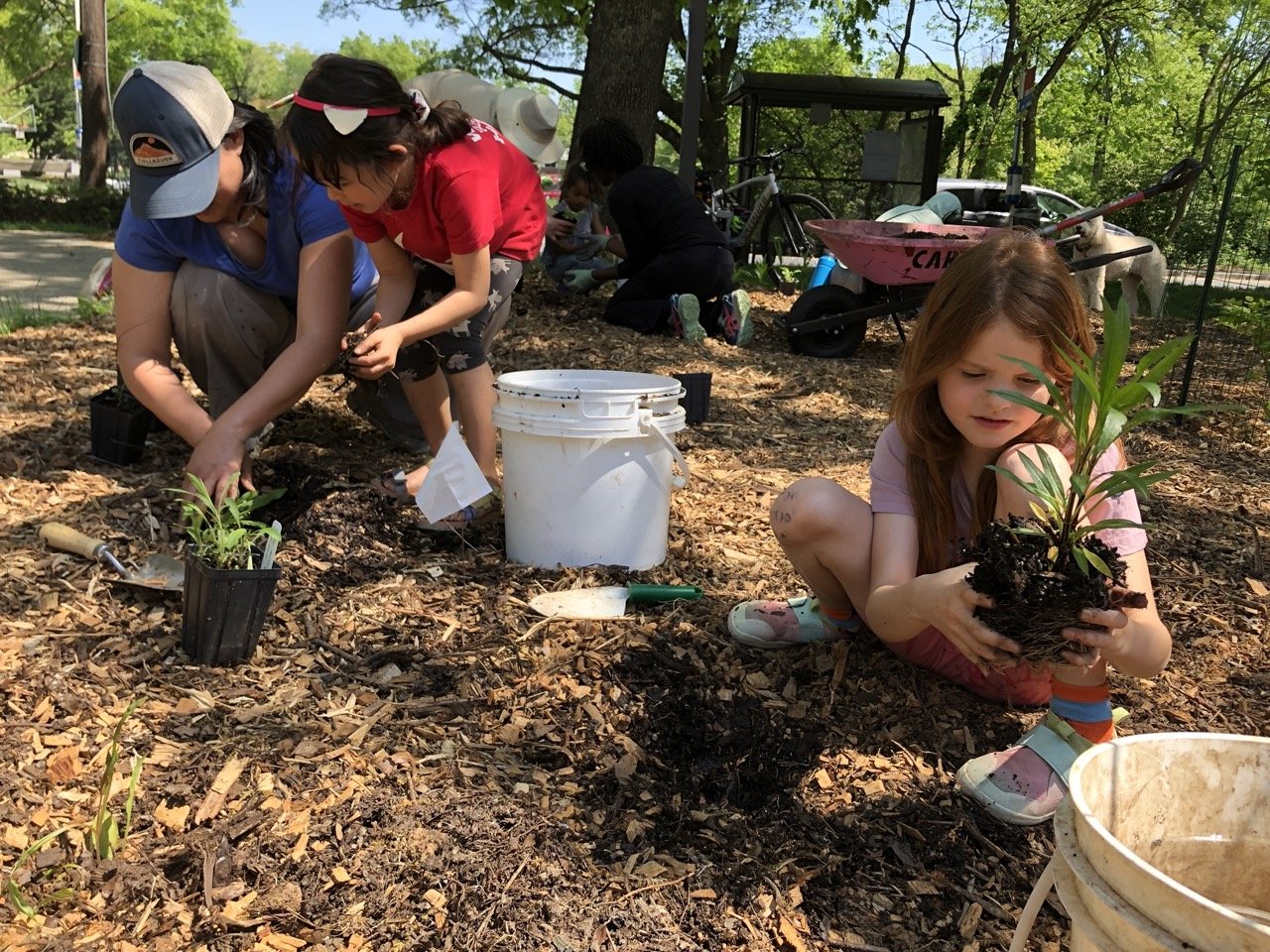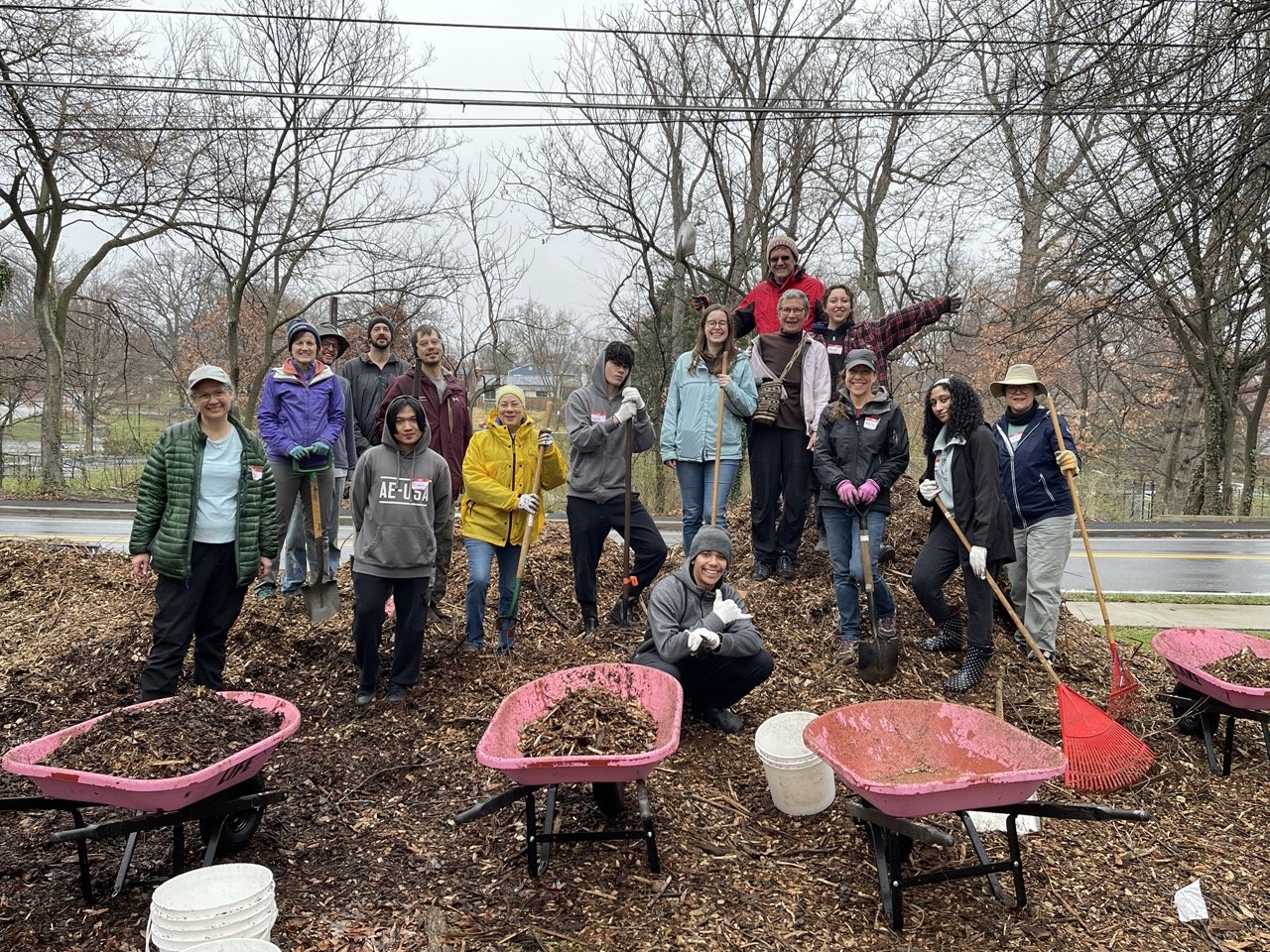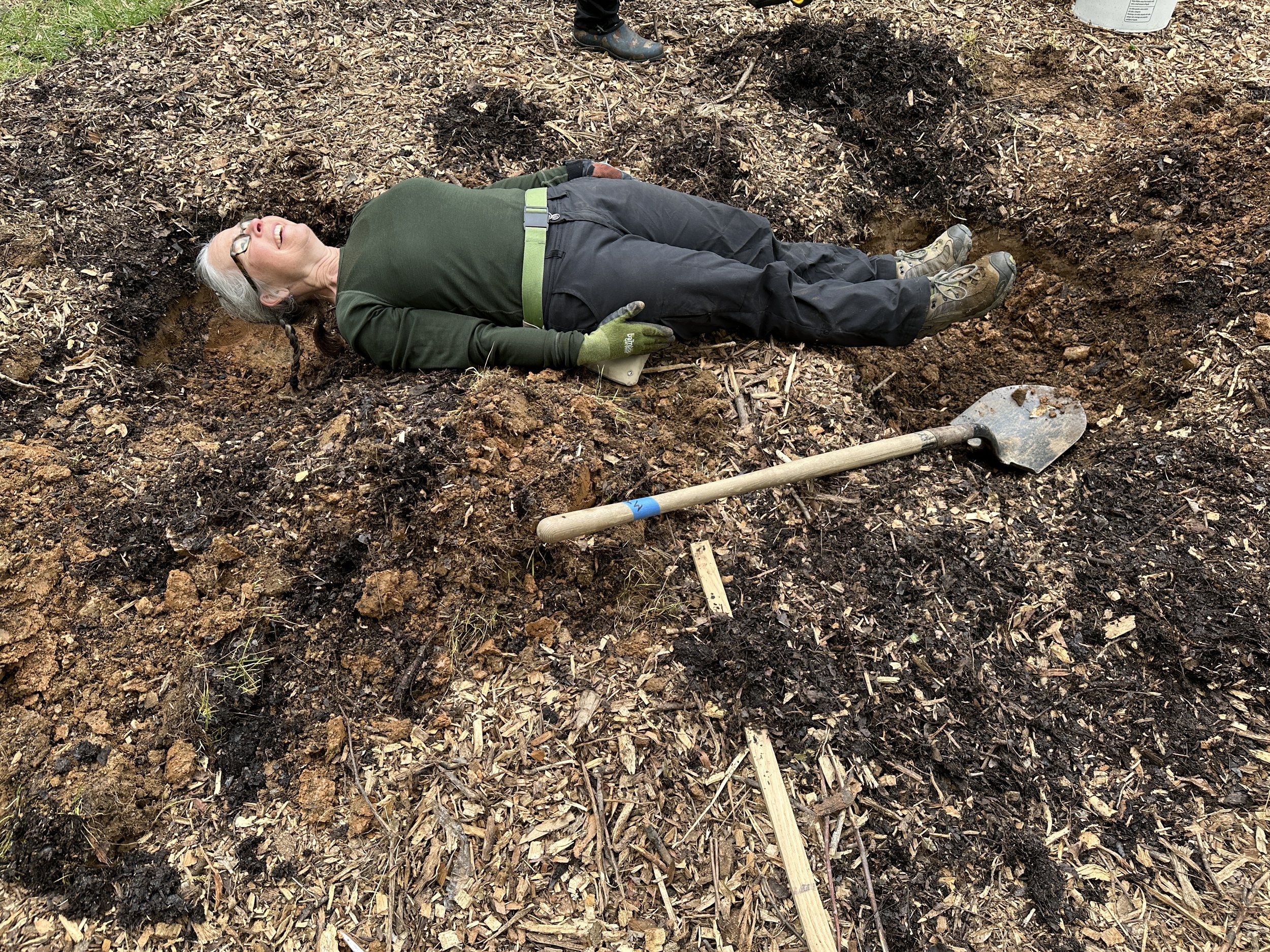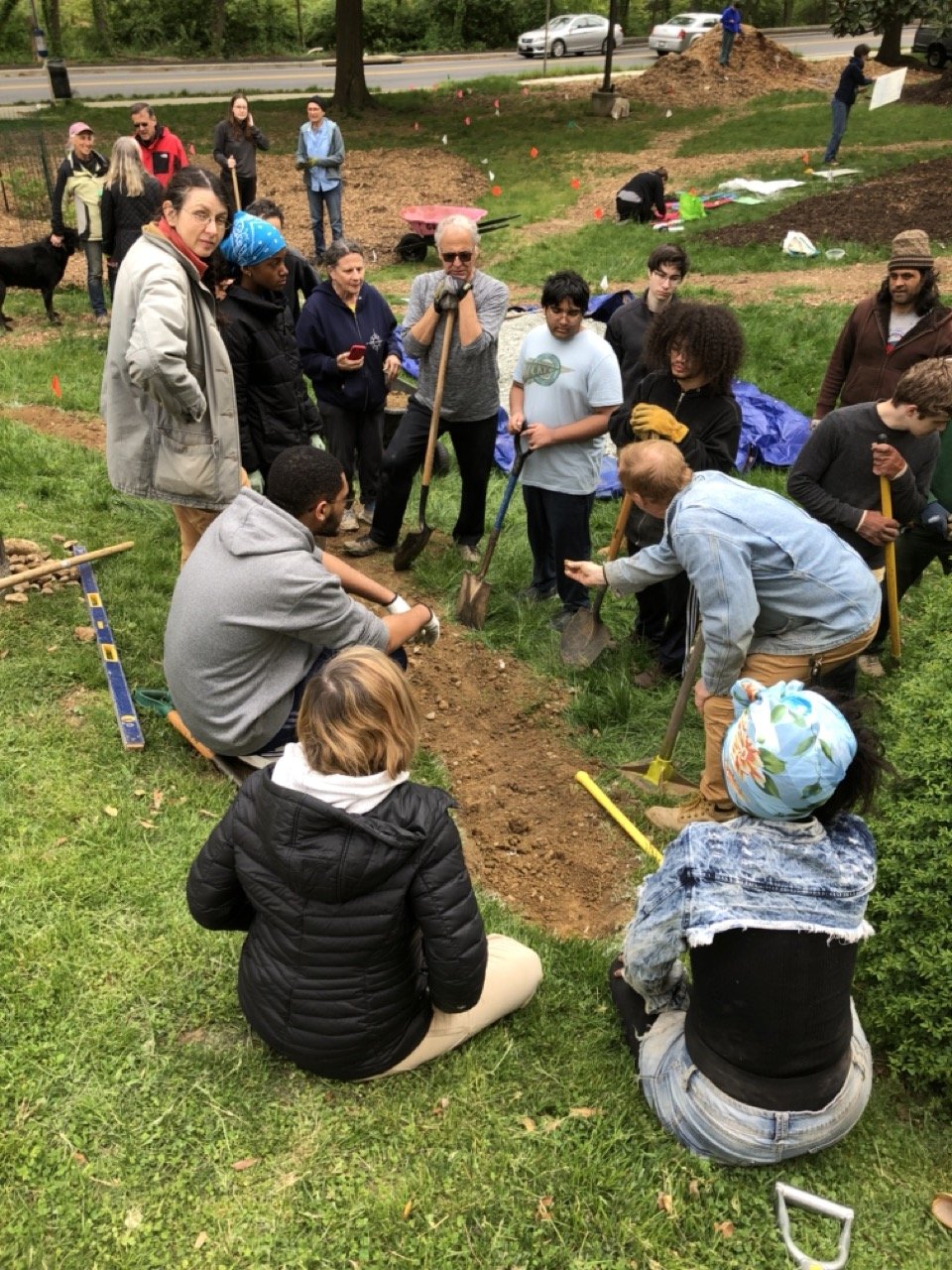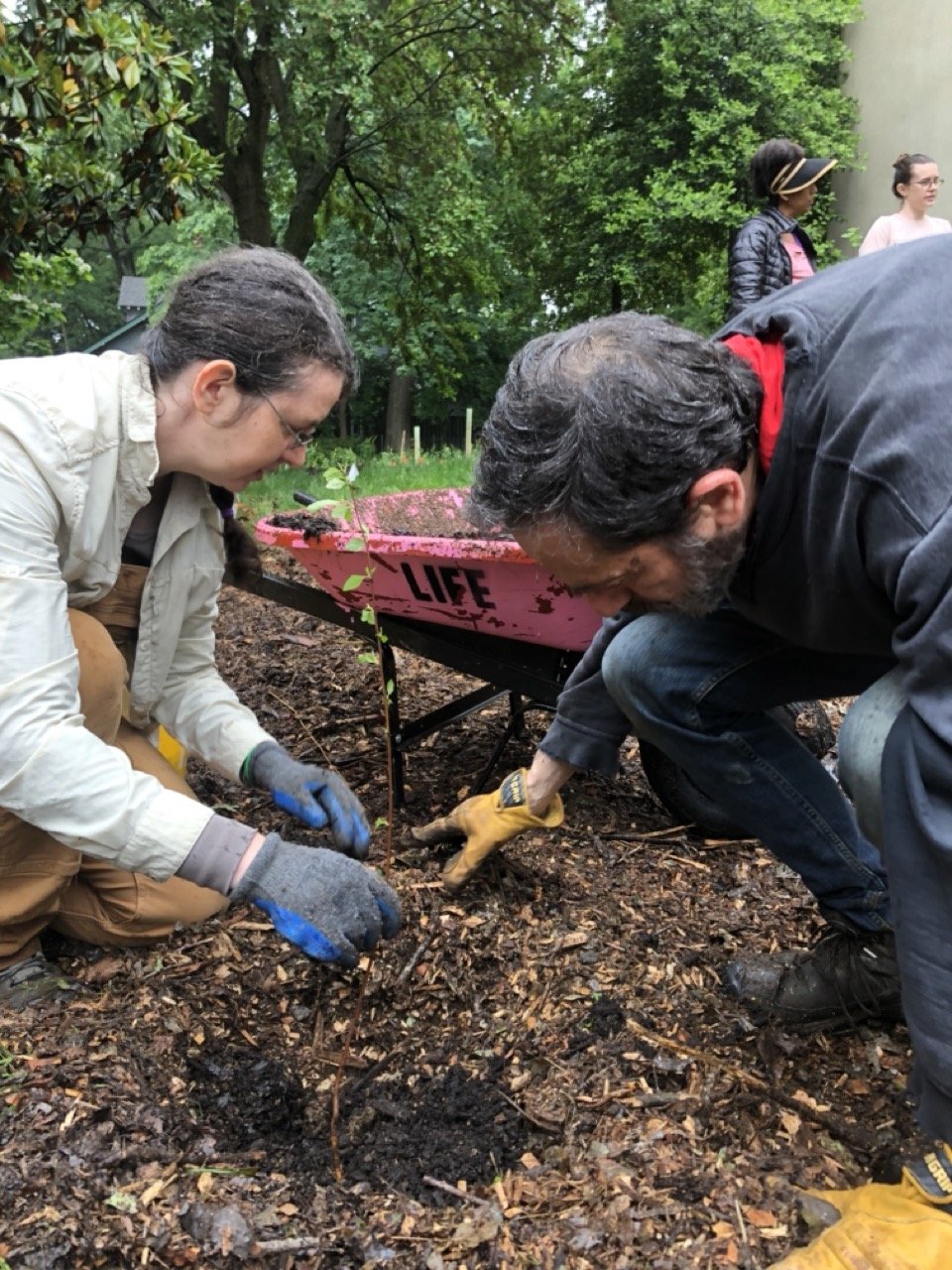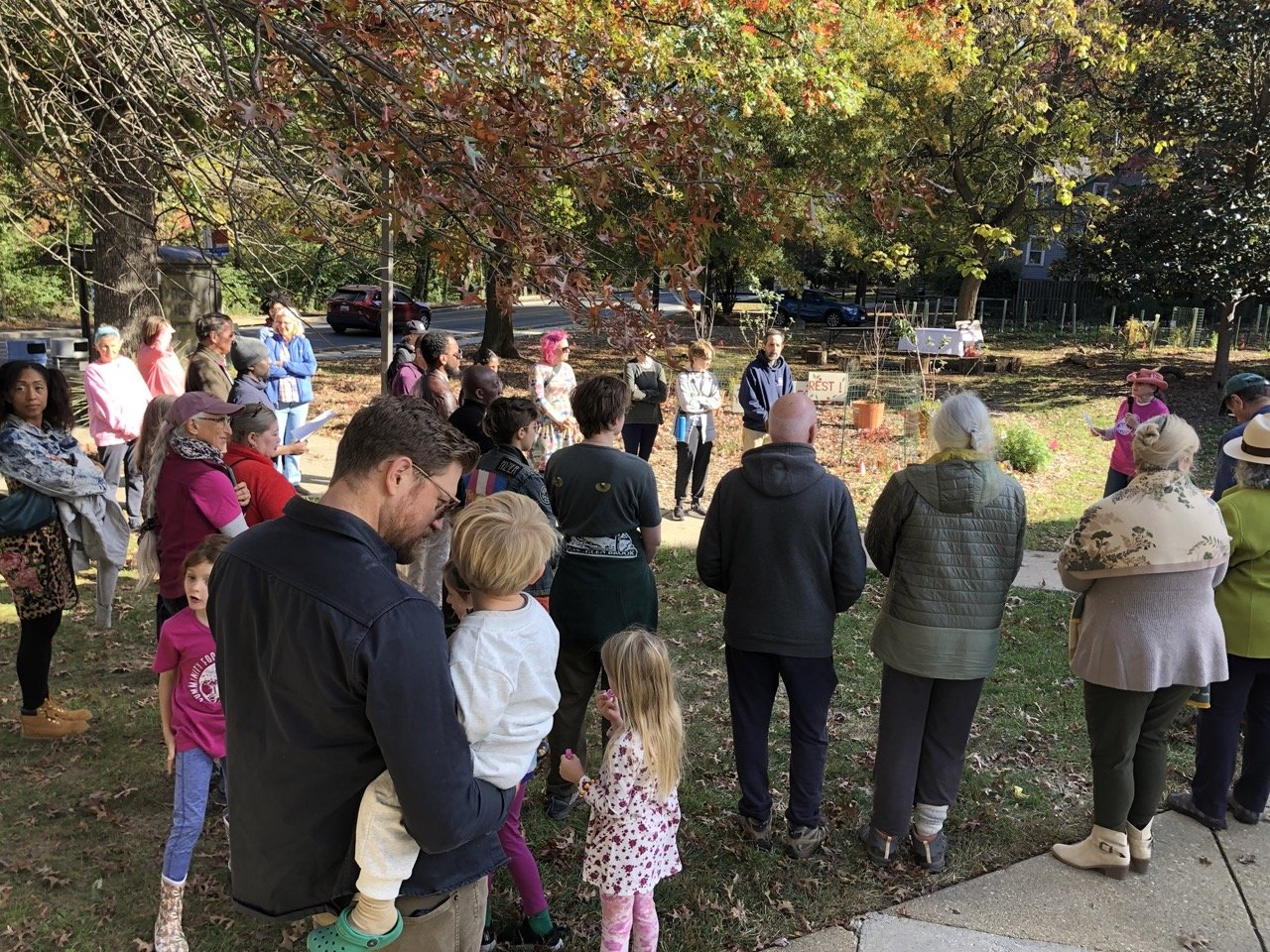
Montgomery College Food Forest
CFFC - with students and community volunteers - has installed two food forests at Montgomery College’s Takoma Park/Silver Spring Campus. The first is at the corner of Philadelphia Ave and Chicago Avenue (7719 Chicago Avenue, Silver Spring, MD, 20910, map here), and the second is less than a 5 min walk away at 7676 Fenton Street, Silver Spring, MD, 20910 (map here).
These food forests are already nurturing a deeper understanding of food production and food sovereignty in the region. As the spaces mature, they will become a sustainable source of food for the college's student population, which suffers high levels of food insecurity. They are also rapidly becoming spaces for community engagement, recreation and education, with regular workshops, demos, festivals and other events. An additional area on the campus will be developed in the years ahead.
The Montgomery College project began in 2023. We worked with five permaculture designers who each took on the design of a portion of the 20,000 square foot site. Our lead designers then combined the designs, ensuring the various elements flowed together. One of the design teams was Montgomery College’s newly formed Permaculture Club, which was established once we secured permission to install the food forest.
The Club has been instrumental in leading efforts at the site while engaging the student population. It plans to add a seed library, a composting system, an art mural, and educational signage to the site.
We began preparing the first site in the winter of 2023, spreading around 450 cubic yards of leaf mulch, wood chip and compost on the site to increase soil fertility. Our first plants went in the ground in Spring 2024.
Work on the second site next to the metro tracks began in 2024. We again spread about 500 cubic yards of leaf mulch and woodchip, letting it rot down over the winter to improve the soil. In early 2025 we rented an auger and drilled “biopores” throughout the site, backfilling them with biochar, compost, bokashi, woodchip and food scraps. This was necessary because the site has a layer of rubble below the top soil that we need the roots to penetrate. These biopores will allow the roots to reach down below the rubble layer. We then began to plant up the site with trees, shrubs and wildflowers in the spring of 2025.
Updates
Gallery
